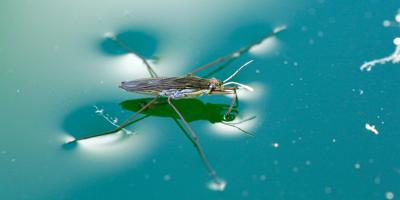Are Cockroaches Really as Bad as People Think?

It will come as no surprise that cockroaches get a really bad rep, which we believe is justified… to an extent. Did you know that of the 4,500 roach species, only 30 of them are actually considered pests? And of those, only about five are even worth mentioning. In fact, the rest are harmless and can even be beneficial to the environment.
Hard to believe? We get it. Despite the dual nature of the cockroach, whether good or bad, the entire species is dreaded and certainly not welcome in our homes and businesses.
A Reputation to Uphold
Ask just about anyone and they will likely have an anecdote about a horrifying cockroach encounter. BBC Future chronicles some of these narratives in the feature Cockroaches: The insect we’re programmed to fear, which concludes on the cautionary note that (spoiler alert) roaches aren’t going anywhere anytime soon. In fact, they’re expected to outlast the human species, in light of their impressive evolutionary tale and tenacious spirit of survival.
Regardless, most of us cringe at the mention of the word roach and are eager to do whatever we can to keep them out of our homes and businesses. For very good reasons, too.
The “bad” cockroaches out there, including the oriental cockroach, present sanitary risks and pose the threat of disease. This is especially true of the oriental cockroach, which, while smaller in size compared to the German or American cockroach, spends a significant amount of its time in sewers.
The World Health Organization (WHO) defines cockroaches as “unhygienic scavengers in human settlements” and who can wonder why. The WHO considers cockroaches vectors of intestinal disease, including cholera, diarrhea, dysentery, and typhoid fever.
Cockroaches do not bite; however, they do have sizable leg spines that can cause a scratch and, given the bacteria they can carry, could lead to an infection.
The United States Environmental Protection Agency (EPA) cautions that cockroaches can pick up (remember the sewer) disease causing bacteria, potentially resulting in cases of salmonella, staphylococcus, and streptococcus if they then traipsed their way across any food or surfaces where food is prepared. Moreover, cockroaches and their resulting fecal matter can cause allergic reactions and asthma; young children are particularly prone to this threat.
No matter what type of roach you’re dealing with, the fact is they are incredibly difficult to get rid of. They are resilient and determined to survive. Under the right conditions, a mating pair of German cockroaches can produce approximately two to three million offspring in only a couple of years. A hearty species, cockroaches are not picky about what they eat and have been known to consume anything and everything, including a sound sleeper’s eyelashes.
It’s the stuff of nightmares and certainly indicative of the bad rep they so deserve.
In light of these facts, what could ever be good about cockroaches? What benefit can they possibly provide?
From an ecological standpoint, cockroaches are masters at recycling. Since they eat almost anything, even animal wastes and pollen, their own waste then feeds plants and trees, supporting life cycles necessary to produce oxygen. In other words, a good cockroach is one that stays outside and out of your home or business.
A Question of Character: Good vs. Bad Cockroaches
How can you tell if the roach scuttling across your kitchen floor is good or bad? Chances are, it’s bad -- given that it’s inside your home -- and likely one of the more common cockroach pests like the German cockroach, which reproduces at an alarmingly fast rate. If you see one, you can be confident there are others, with the German cockroach able to produce up to six new generations of cockroaches, annually.
For this reason, cockroach treatment is not a DIY project. Given the attributes and behaviors we’ve shared about “bad” roaches, you do not want to risk encountering them in your home or business.
There are things you can do to help prevent cockroaches from entering your home or business in the first place. It’s important to keep in mind that cockroaches are more likely to invade a business before a home, where they might find plenty of pallets and cardboard. However, cockroaches can hitch a ride into residential properties, too, by crawling into a cardboard box scheduled for delivery. You’ll think twice before opening that Amazon package too quickly now, won’t you?
We realize you probably prefer not to get too close to a cockroach to take its photo, but doing so can help identify whether you’re snapping a shot of a good or back roach. If possible, try to determine its coloration, which can help identify the cockroach species.
Don’t risk a run-in with a roach of any kind.
Contact us to schedule an inspection or request a free bug ID from our in-house expert, Dr. Gary.



